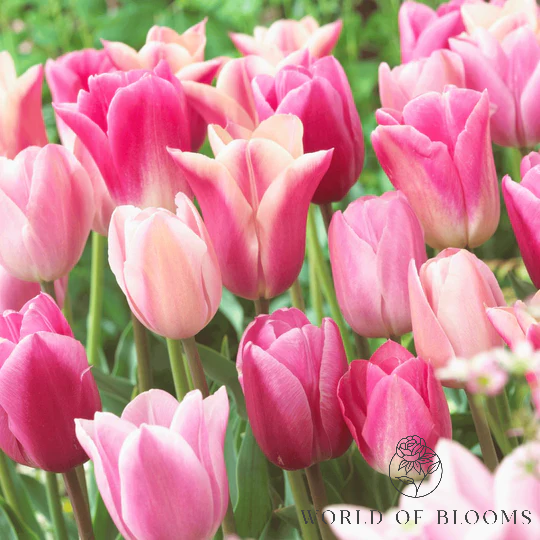Tulip Double Fringed 'Qatar'
Couldn't load pickup availability
Tulip Double Fringed 'Qatar' is a captivating spring bloom that dazzles with its unique, fringed edges and rich, velvety red petals. Each lush, double-layered flower showcases a striking texture, creating a dramatic and eye-catching display. Standing about 12 to 14 inches tall, these stunning tulips rise gracefully above lush green foliage, making them perfect for borders, containers, or as exquisite cut flowers. With their bold color and whimsical fringing, 'Qatar' adds a touch of elegance and flair to any garden, celebrating the beauty of spring in style!
Zones 3 - 8
When to Plant
- Timing: Plant tulip bulbs in the fall, about 6-8 weeks before the first expected frost. This allows the bulbs to establish roots before winter.
Choosing the Right Spot
- Sunlight: Tulips prefer full sun to partial shade. A spot that gets at least 6 hours of sunlight per day is ideal.
- Soil: Opt for well-drained soil. Tulips dislike soggy conditions, so avoid areas where water tends to pool. If your soil is heavy or clay-like, mix in some compost or sand to improve drainage.
How to Plant Tulip Bulbs
- Prepare the Soil:
- Loosen the soil to a depth of about 12 inches.
- Incorporate compost or well-rotted manure to enrich the soil and enhance drainage.
- Determine Planting Depth and Spacing:
- Depth: Plant the bulbs 6-8 inches deep, measuring from the base of the bulb to the soil surface.
- Spacing: Space the bulbs about 4-6 inches apart. This will give them room to grow and ensure good air circulation.
- Planting Steps:
- Dig a hole that’s about 6-8 inches deep and slightly wider than the bulb.
- Place the bulb in the hole with the pointed end facing up.
- Cover the bulb with soil and gently press it down to remove any air pockets.
- Watering:
- Water the bulbs thoroughly after planting to help settle the soil.
- Ensure that the soil remains moist but not waterlogged. Good drainage is crucial to prevent bulb rot.
- Mulching:
- Apply a layer of mulch (2-3 inches) over the planting area. Mulch helps insulate the soil and retain moisture, and it can also help prevent weed growth.
Aftercare
- Spring Growth: As temperatures warm in the spring, tulips will start to grow. Keep the soil evenly moist but not soggy.
- Fertilizing: Tulips generally do not require much fertilizing. However, you can apply a balanced fertilizer or bone meal in early spring as the shoots emerge to support healthy growth.
Additional Tips
- Pests and Diseases: Tulips are generally hardy, but be mindful of pests like aphids or diseases such as fungal infections. Good drainage and proper spacing can help prevent many issues.
- Companion Planting: Tulips look beautiful with other spring flowers such as daffodils, hyacinths, and muscari. They can also be combined with ornamental grasses and perennials for a dynamic garden display.
By following these steps, you’ll ensure a vibrant and colorful tulip display in your garden come springtime!

Recently viewed













